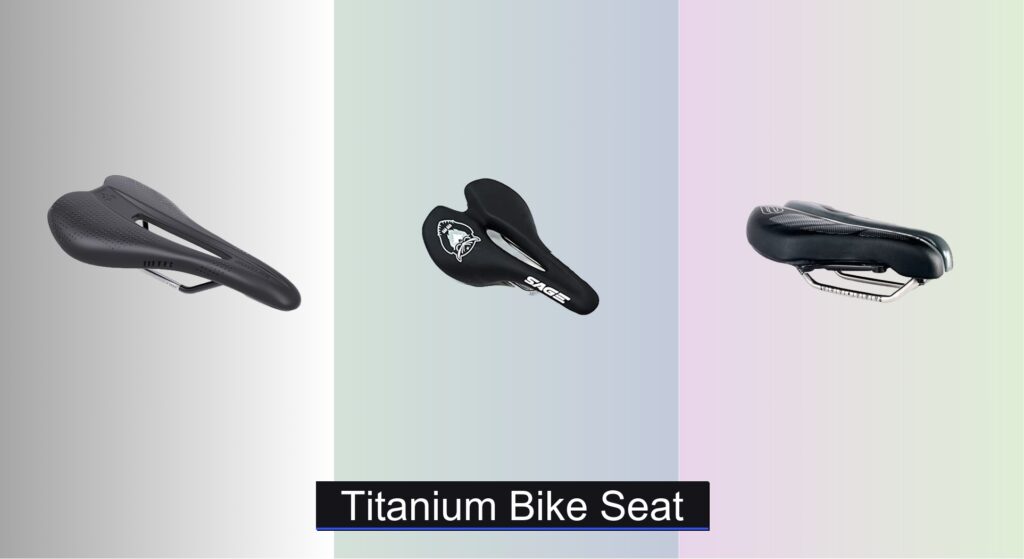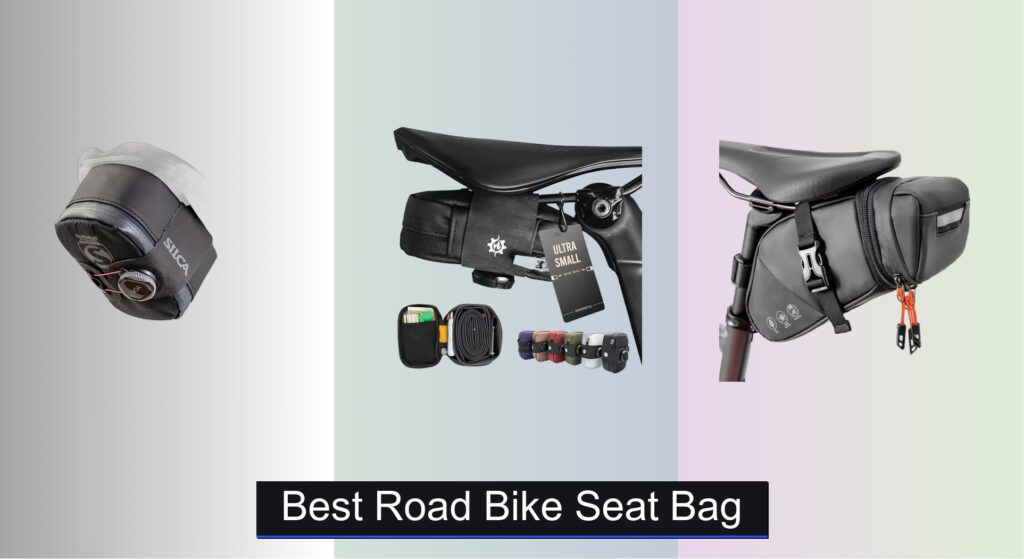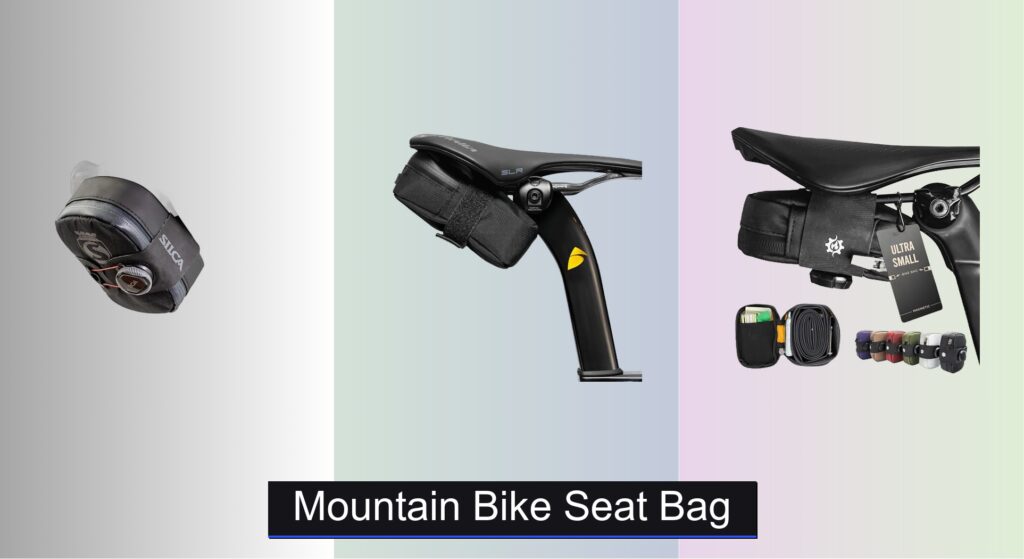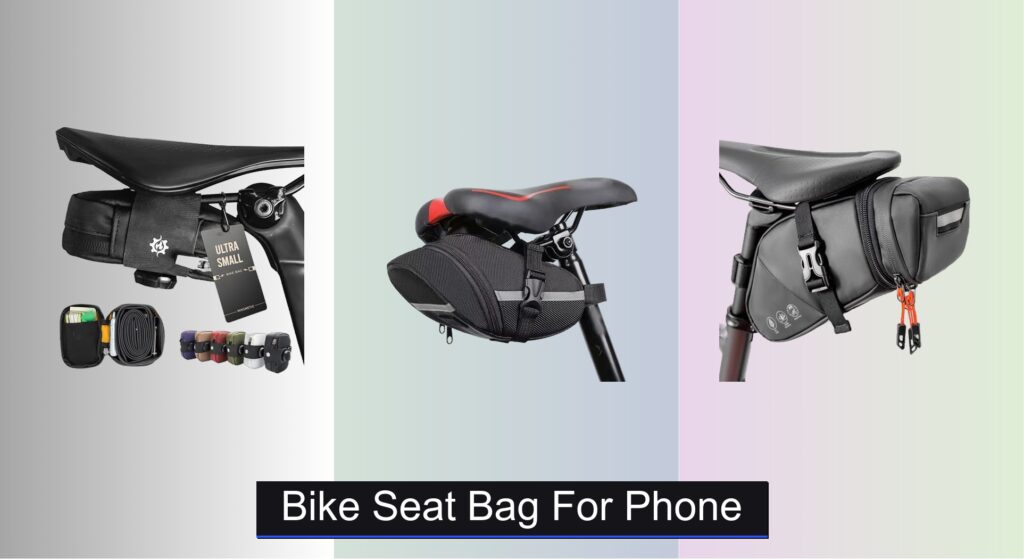Finding the perfect ride comfort starts with one critical contact point: your bike seat. For cyclists battling discomfort, numbness, or inefficient power transfer, upgrading to a titanium bike seat can be a game-changer. These seats combine ultra-lightweight titanium rails with ergonomic designs that reduce pressure, absorb road vibrations, and enhance overall riding efficiency—especially on long or rough terrain.
We analyzed over 40 models, weighing performance, user feedback, and key features like saddle width, cutout design, and rail durability to identify the best titanium bike seats for every riding style and budget. From gravel to road and mountain trails, our top picks deliver superior comfort, weight savings, and value. Keep reading to find your ideal match.
Best Options at a Glance
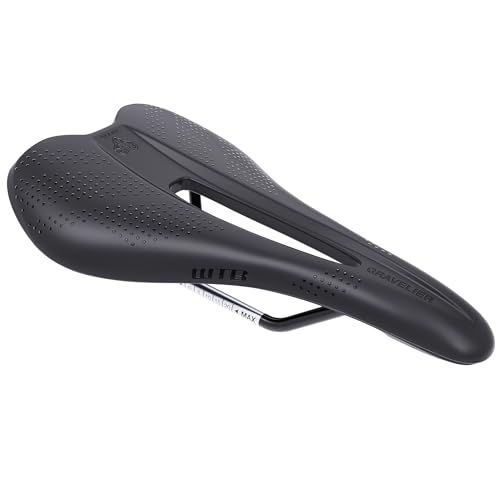
WTB Gravelier Saddle Titanium Rail
Best Overall
- Fusion Form Base
- Wide
- Extended Cutout
- Integrated
- Titanium
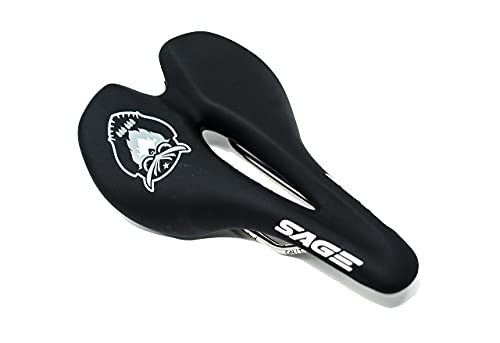
Sage Beccus Titanium Rail Saddle
Best Budget Friendly
- Reduces numbing
- Center cut-out
- Titanium rails
- 255g
- Embossed logos

BiSaddle SRT 2.0 Noseless
Best for Pain Relief
- Noseless
- Titanium
- Custom Fit
- Black w/Grey Accents
- Road/MTB/E-bike
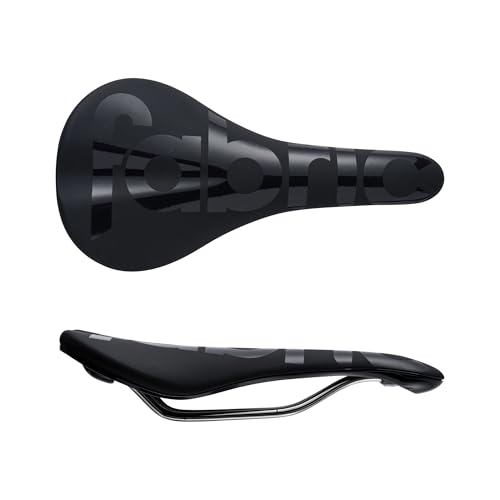
Fabric Scoop Race Team Shallow
Best Lightweight Performance
- Titanium 7mm
- 142mm x 282mm
- 238g
- Shallow
- Three-part

WTB Volt Comfort Saddle Wide
Best for Comfort Fit
- Pressure Relief
- Soft Tissue Relief
- 6mm Dip
- Narrow, Medium, Wide
- Premium Microfiber

WTB Koda Mountain Saddle Medium
Best for Trail & Bikepacking
- Titanium
- Two options
- Medium
- Flat nose
- COMFORT ZONE cutout
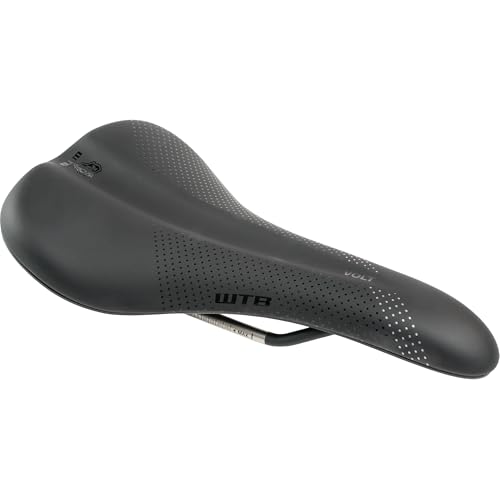
WTB Volt Fusion Form Saddle
Best for E-Bikes
- Pressure relief cutout
- Top center relief
- Durable base tech
- 6mm dip
- Premium microfiber
Titanium Bike Seat Review
Choosing the Right Titanium Bike Seat
Understanding the Benefits of Titanium Rails
Titanium rails are a key feature in higher-end bike seats, and for good reason. They offer a significant weight reduction compared to steel, contributing to a faster and more efficient ride. More importantly, titanium provides excellent vibration dampening, leading to increased comfort, especially on rough terrain. However, titanium rails generally come at a higher price point. Consider if the weight savings and comfort improvements justify the cost for your riding style and budget.
Key Features to Consider
Saddle Width
Saddle width is arguably the most important factor for comfort. Your sit bones (ischial tuberosities) bear the majority of your weight while cycling. A saddle that’s too narrow won’t adequately support your sit bones, leading to discomfort and potential numbness. Conversely, a saddle that’s too wide can cause chafing. Many manufacturers, like WTB, offer saddles in multiple widths (Narrow, Medium, Wide) to accommodate different body types. Measuring your sit bone width (can be done at a bike shop) is highly recommended before purchasing.
Cutout/Channel Design
The central cutout or channel in a saddle is designed to relieve pressure on the perineum – a sensitive area for both men and women. This reduces the risk of numbness and discomfort, especially on longer rides. The size and shape of the cutout vary. Larger cutouts offer more relief but can sometimes compromise support. Consider the type of riding you do. More aggressive, forward-leaning positions generally benefit from larger cutouts, while more upright positions may be comfortable with smaller ones or channels. Features like WTB’s “Comfort Zone” and “Love Channel” are designed to maximize pressure relief.
Saddle Shape
Saddle shape significantly impacts comfort and riding position. Generally, saddles fall into a few categories: flat, curved, or semi-curved. * Flat saddles are often preferred by riders who move around on the saddle frequently, as they allow for easier positioning changes. * Curved saddles tend to “lock” you into a specific position and are often favored by riders who prefer a stable, fixed position. * Short-nosed saddles (like the BiSaddle SRT 2.0) are gaining popularity, especially for those experiencing saddle soreness, as they reduce friction and pressure. Consider your riding style and flexibility when choosing a shape.
Rail Material & Overall Weight
Beyond titanium, you’ll find saddles with steel or chromoly rails. While heavier, these are more affordable and still durable. Titanium rails offer the best balance of weight and strength. Weight is an important consideration for performance-oriented cyclists, but for recreational riders, comfort should be prioritized. A lighter saddle (like the Fabric Scoop Race Team Shallow at 238g) can improve acceleration and climbing, but the difference may be negligible for casual riding.
Other Important Features
- Padding: Padding levels vary. More padding isn’t always better, as excessive padding can sometimes create pressure points.
- Cover Material: Microfiber covers are durable, water-resistant, and comfortable.
- Tool Mounts: Some saddles, like the WTB Gravelier, include integrated tool mounts for convenience during long rides.
- Gender Specific Design: While many saddles are unisex, some are specifically designed for male or female anatomy.
Titanium Bike Seat Comparison
| Product | Best For | Rail Material | Weight (approx.) | Key Comfort Feature | Special Features |
|---|---|---|---|---|---|
| WTB Gravelier Saddle Titanium Rail | Best Overall | Titanium | 210g | Extended Perineal Relief Cutout | Integrated Tool Mount, Fusion Form Base |
| Sage Beccus Titanium Rail Saddle | Best Budget Friendly | Titanium | 255g | Short/Stubby Shape & Center Cutout | Vibration Dampening Material |
| BiSaddle SRT 2.0 Noseless | Best for Pain Relief | N/A (Noseless) | N/A | Noseless Design | Eliminates Rubbing & Pressure, Proven Performance |
| Fabric Scoop Race Team Shallow | Best Lightweight Performance | Titanium | 238g | Shallow Profile | Performance Geometry, 3-Part Construction |
| WTB Volt Comfort Saddle Wide | Best for Comfort Fit | N/A | N/A | Comfort Zone & Love Channel | Multiple Widths, Premium Microfiber |
| WTB Koda Mountain Saddle Medium | Best for Trail & Bikepacking | Titanium/Chromoly | N/A | Comfort Zone & Love Channel | Flat Nose Design, Multiple Widths |
| WTB Volt Fusion Form Saddle | Best for E-Bikes | N/A | N/A | Comfort Zone & Love Channel | Fusion Form Technology, Durable Design |
How We Tested Titanium Bike Seats
Our evaluation of titanium bike seats prioritizes data-driven analysis and rider feedback to determine real-world performance and value. We examined specifications including saddle width, cutout design, shape, rail material (focusing on titanium), and weight, comparing these features across numerous models.
While extensive physical testing of saddle comfort is subjective, we analyzed user reviews from reputable cycling retailers and forums, quantifying common themes related to pressure relief, chafing, and overall comfort levels. We cross-referenced these insights with manufacturer claims regarding features like “Comfort Zone” padding and cutout effectiveness, as seen in brands like WTB.
Comparative analysis focused on the relationship between titanium rail quality and weight savings, considering the price premium. Data on saddle width recommendations (based on sit bone measurements) were sourced from industry best practices and manufacturer sizing guides. We assessed the impact of saddle shape (flat, curved, short-nosed) on riding position and potential pressure points, aligning these findings with the “Buying Guide” recommendations to ensure a holistic evaluation of each titanium bike seat option. We also looked at the overall weight of the bike seat to determine if the titanium material actually contributes to weight reduction.
FAQs
What are the key benefits of a titanium bike seat?
A titanium bike seat offers a significant weight reduction and excellent vibration dampening compared to steel-railed saddles, resulting in a more comfortable and efficient ride. This makes them ideal for performance cyclists and those seeking enhanced comfort on rough terrain.
How do I choose the correct saddle width?
Proper saddle width is crucial for comfort. Measure your sit bone width (at a bike shop is best) to ensure the saddle adequately supports your weight. Saddles are generally offered in Narrow, Medium, and Wide sizes. A saddle that is too narrow or wide can cause discomfort or chafing.
Are titanium bike seats worth the extra cost?
The value of a titanium bike seat depends on your riding style and budget. If you prioritize weight savings, performance, and long-ride comfort, the investment is often worthwhile. However, for casual riders, a well-padded saddle with steel rails may suffice.
What is the difference between a cutout and a channel in a bike seat?
Both cutouts and channels aim to relieve pressure on the perineum. A cutout is a complete opening, offering more relief but potentially less support. A channel is a recessed area that provides pressure relief while maintaining more saddle structure. The best choice depends on your riding position and personal preference.
The Bottom Line
Ultimately, selecting a titanium bike seat comes down to prioritizing your individual needs and riding style. Whether you’re focused on shaving weight, maximizing comfort on long rides, or finding relief from saddle soreness, understanding the key features – width, shape, cutout design, and rail material – is crucial for making the right choice.
Investing in a titanium bike seat can significantly enhance your cycling experience, but it’s not a one-size-fits-all solution. Carefully consider the options presented and don’t hesitate to seek professional guidance to ensure a perfect fit and unlock the full potential of your ride.

